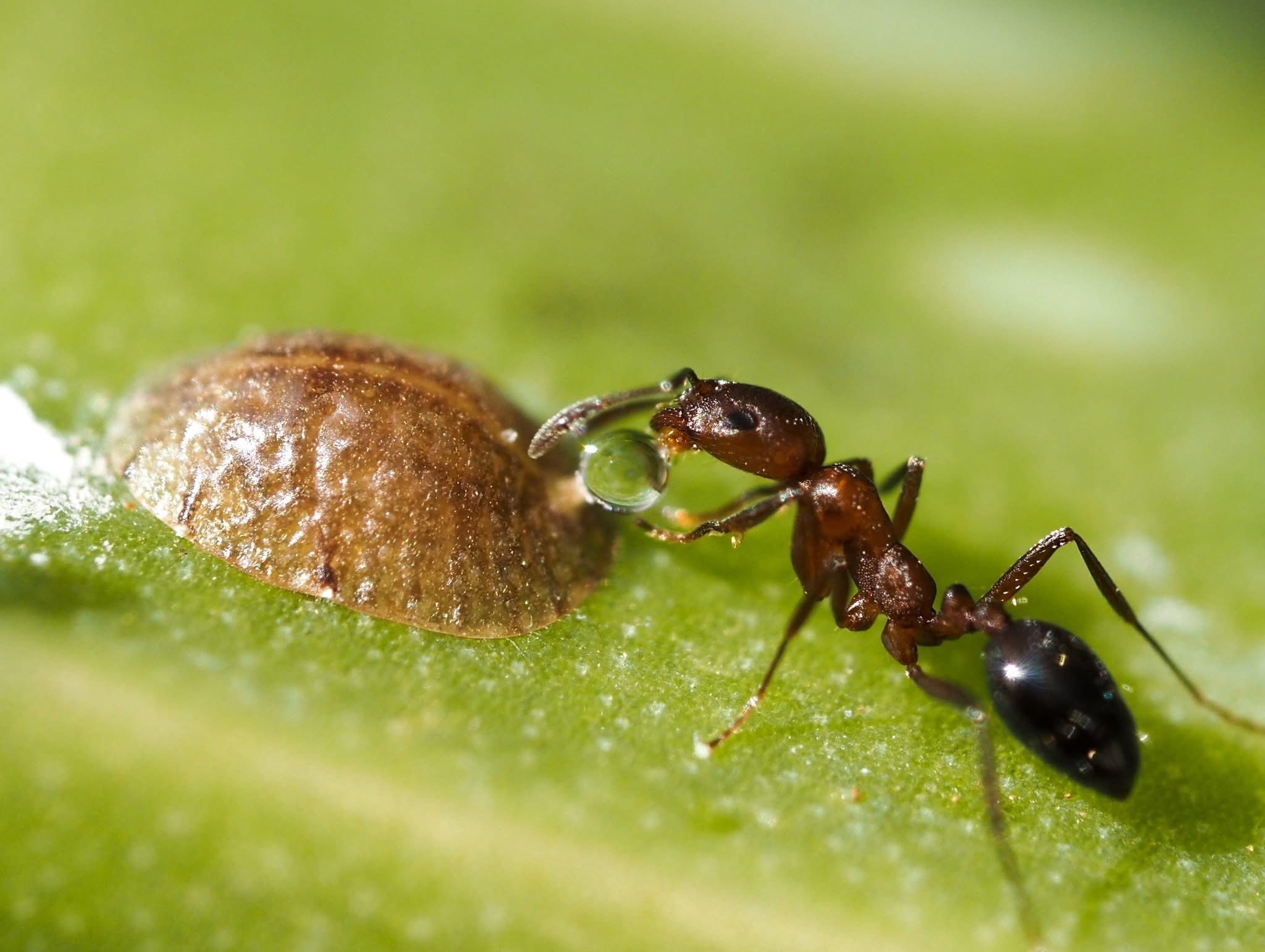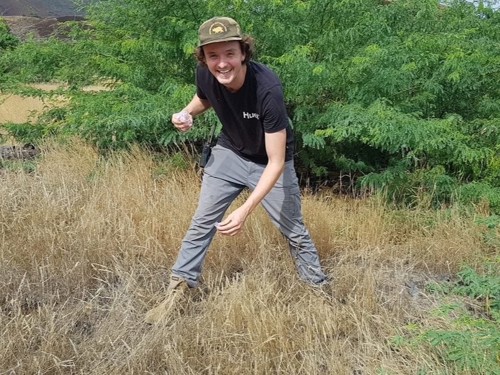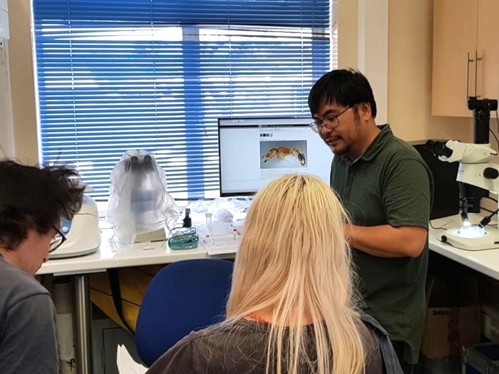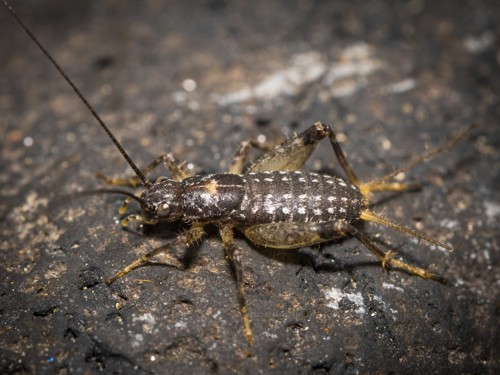Invasive insects of Ascension Island

One of the 17 non-native ant species present on Ascension Island, Monomorium subopacum, protecting a non-native plant pest in exchange for honeydew secretions. Credit - Adam Sharp.
Invertebrate conservation on Ascension Island leads to globally relevant invasive species research
Invertebrates are a broad group of animals defined by the fact they do not have a backbone. This group includes insects (such as ants and crickets), worms, jellyfish, and crustaceans.
How exactly are invasive species impacting island-endemic invertebrates? This is the question that the project ‘From pseudoscorpions to crickets: securing Ascension's unique invertebrates’, set out to answer.
A major focus of this project was assessing the impact of non-native ants on Ascension Island ecology, including the influence of the big-headed ant (Pheidole megacephala), a species widespread across the island. We (project officer Adam Sharp and ant specialist Noel Tawatao) found that big-headed ants and many other non-native ant species were able to survive alongside one another by dividing up resources.


The current recorded distributions of non-native ants on Ascension indicate that these non-native species spread from human settlements. The findings from this project also warned that the presence of non-native ant species would likely not prevent more non-native species from establishing themselves on the island. Effective biosecurity (protocols and practices that prevent the introduction and spread of harmful species) on Ascension and other islands will therefore always be imperative, even if many non-native species are already established.
This project also investigated the impacts of these non-native ants on the Ascension-endemic invertebrate species. Joined by visiting postgraduate student Weng Yuen Chin (also supported by Darwin Plus Local funding), the team found that invasive ants were the dominant predators of native invertebrates over much of the island area, especially around non-native vegetation.
In fact, it is likely that through predation, invasive ants have shaped where the unique Ascension Island scaly cricket (Discophallus ascension) can be found. Using statistical models, it was possible to predict places on the island where this endemic cricket had been reduced in numbers by invasive ants.
The endemic Ascension Island scaly cricket is found in high numbers on the most barren coastal lava flows of Ascension. Our research suggests that the presence of scaly crickets in this environment is not just because they prefer these habitats. Instead, the crickets might also use these areas as a refuge, to avoid being predated on by invasive invertebrate species who are unable to live in these harsh habitats. Maintaining a range of habitats on island territories like Ascension is likely beneficial for native species, as some of these habitats can enable native species to avoid spreading invasives.

The results from Ascension Island can be compared to those from other oceanic islands. In collaboration with Prof. Alan Gray, it was found that similar tiny habitats safeguard many endemic invertebrates globally that are threatened with extinction by invasive species. Common types of ‘micro-refugia’ (areas that protect endemic species from the threat of invasive species) are remnant patches of native vegetation, areas of high-elevation, and sea stacks (towering stacks of rock in the sea). Caves and isolated pools also protect endemic species from other threats.
Ascension is the only island known to host all four of these invertebrate micro-refugia. If these tiny habitats are managed effectively under the limited capacity of local government, it could inspire achievable invertebrate conservation elsewhere.
This project was successful in surveying, mapping, and managing this isolated island’s invertebrate biodiversity. Recently, this knowledge has informed high-impact scientific publications, that have potential application to the management of other island territories.
Links to scientific publications:
Ant coexistence and spread on Ascension.
Ant predation on the endemic Ascension Island scaly cricket (1).
Ant predation on the endemic Ascension Island scaly cricket (2).
Impact of invasive ants on the island distribution of the Ascension Island scaly cricket.
Written by Adam Sharp and Noel Tawatao. For more information on this Darwin Plus Main project DPLUS135, led by Ascension Island Government, please click here.

 Back
Back